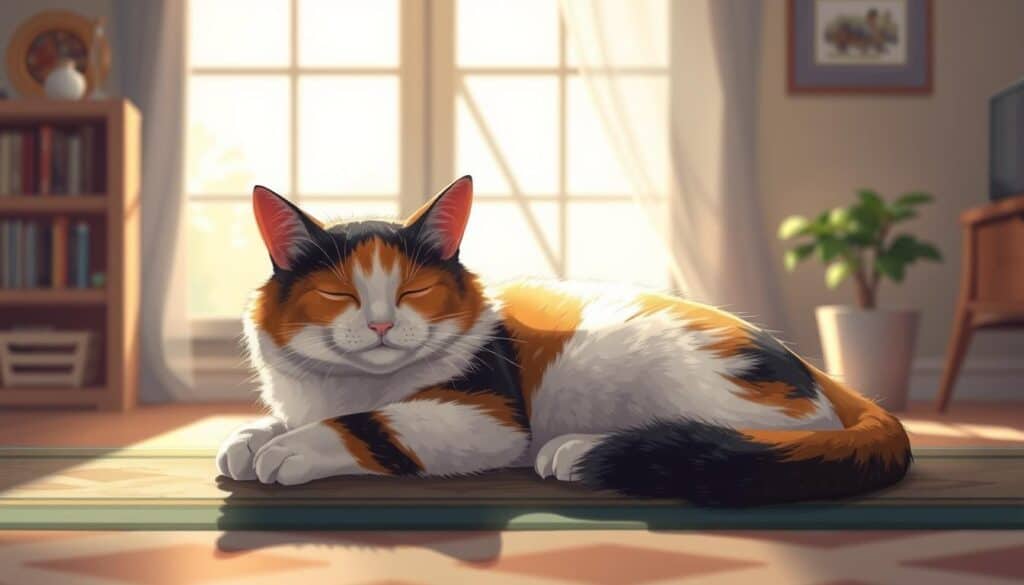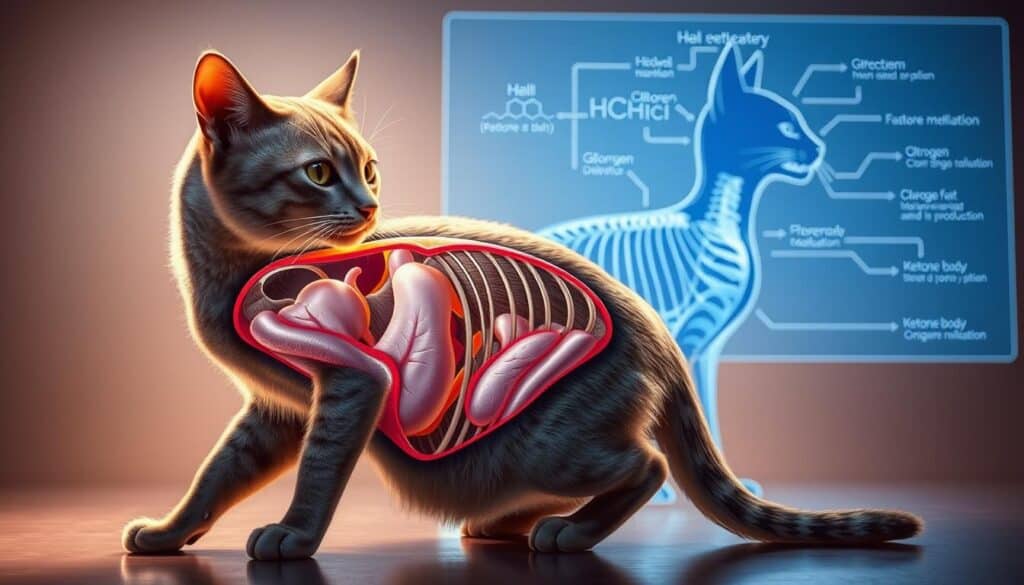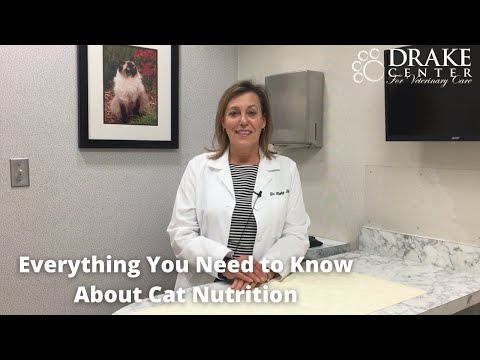Many cat owners wonder, how long can a cat go without food? This question is key to understanding a cat’s diet and the dangers of not eating. A healthy cat should not skip meals for more than 24-48 hours. But, a cat’s age and health can change this time.
It’s important to know when a cat stops eating and what it means. Quick action is needed to avoid malnutrition. Knowing how long a cat can survive without food or water is critical.
Key Takeaways
- A healthy cat should not go without food for more than 24-48 hours.
- Age and underlying health issues can affect a cat’s hunger and survival time.
- Prompt action is necessary if a cat stops eating to prevent serious health issues.
- Understanding your cat’s nutritional needs is essential for their well-being.
- Continuous refusal to eat may indicate underlying problems that require veterinary attention.
Understanding Your Cat’s Nutritional Needs
It’s key to meet a cat’s nutritional needs for their health and happiness. Cats need a lot of protein because they are meat-eaters. A balanced diet with the right nutrients is essential.
A good diet keeps a cat’s body in top shape. It also boosts their mood and energy.
The Importance of a Balanced Diet
A balanced diet is very important for cats. Without the right nutrients, cats can face serious health issues. This includes organ failure and chronic diseases.
Choosing high-quality cat food is important. It should have enough protein, vitamins, and minerals. Talking to a vet can help pick the best food for your cat.
Signs of a Healthy Appetite
Knowing when a cat is eating well is important. Look for regular eating times, excitement for food, and a healthy weight and coat. These signs mean they’re getting the nutrients they need.
If a cat’s eating habits change suddenly, it’s time to check their diet. Or, you might need to talk to a vet.
How Long Can a Cat Go Without Food?

Knowing how long a cat can live without eating is key for pet owners. Many things affect how long a cat can go without food, like age, health, and weight. Even healthy cats face health risks if they don’t eat for too long.
General Timeframes for Cats
Most experts say a cat can last about 1 to 2 weeks without food. But, every cat is different. A young, healthy cat might last two weeks, while an older or sick cat might only last a few days.
It’s important for owners to watch their cat’s eating habits. A sudden drop in appetite can mean serious health problems. Knowing how long a cat can go without food helps owners act quickly if needed.
Comparative Analysis: Cats vs. Other Pets
When comparing cats to other pets, like dogs, there are big differences. Dogs can often go longer without food than cats. This is because dogs and cats have different ways of processing food.
It’s vital for cat owners to know these differences. They should keep an eye on their cats to prevent health problems from not eating enough.
How Long Can a Cat Go Without Food and Water?
Knowing how long a cat can survive without food and water is key for pet owners. Cats can last longer without food than water, but not without both. Knowing these limits helps owners act fast if needed.
Effects of Dehydration on Cats
Dehydration in cats happens fast, worse with no food. Without water, the body can’t work right, risking kidney damage and other serious problems. It’s vital to see dehydration’s danger, as even a little time without water can harm.
Signs to Watch For
Cat owners should watch for dehydration signs. Look for lethargy, dry gums, and less skin elasticity. If a cat shows these signs, get vet help right away. Watching water and food intake keeps a cat healthy and hydrated.
What Happens After a Cat Stops Eating?

When a cat stops eating, its body changes quickly. It’s important to know these changes because they affect a cat’s health. The body starts using fat for energy, which can lead to a serious condition called hepatic lipidosis.
This happens when a cat hasn’t eaten for a long time. It’s key for cat owners to watch their pets’ eating habits closely.
Metabolic Changes in Cats
At first, a cat’s metabolism adjusts to no food. The body breaks down fat, releasing fatty acids for energy. This can cause fat to build up in the liver, harming its function.
The changes show how delicate a cat’s health is. It’s vital to act fast if a cat won’t eat.
Risk of Liver Damage
The risk of liver damage grows after 48 hours without food. The time it takes for liver damage to happen depends on the cat’s health. Signs of liver trouble can show up quickly after a few days without eating.
This makes it urgent to get veterinary help. Owners should watch for signs of liver problems, which can happen fast during this time.
Factors That Influence a Cat’s Hunger
Many things can change how hungry a cat is. Knowing these helps owners meet their cat’s changing food needs.
Age and Health Conditions
A cat’s hunger can change with age and health. Older cats might eat less due to slower metabolism and dental problems. Health issues like diabetes or kidney disease can also change their eating habits.
It’s important for cat owners to watch these changes. This ensures their pets get the right food for their age and health.
Environmental Factors and Stress
Changes in a cat’s environment can affect its hunger. Moving to a new home or getting new pets can stress them out. This stress can make them eat less or differently.
Keeping a cat’s environment stable and comforting helps. It encourages them to eat regularly.
What to Do If Your Cat Refuses to Eat
When a cat stops eating, it worries pet owners a lot. The first thing to do is figure out why. It could be health problems or stress from the environment. If your cat isn’t eating, getting vet advice is key to check for serious health issues.
Trying different cat foods can also help. Changing the food’s texture or taste might make your cat interested again. It’s important to be patient and try different brands to find what works for your cat.
Also, making the eating area calm and stress-free is vital. Less noise and distractions during meals can help your cat relax. Watching your cat’s eating closely is important. Quick action can stop bigger problems from happening.




